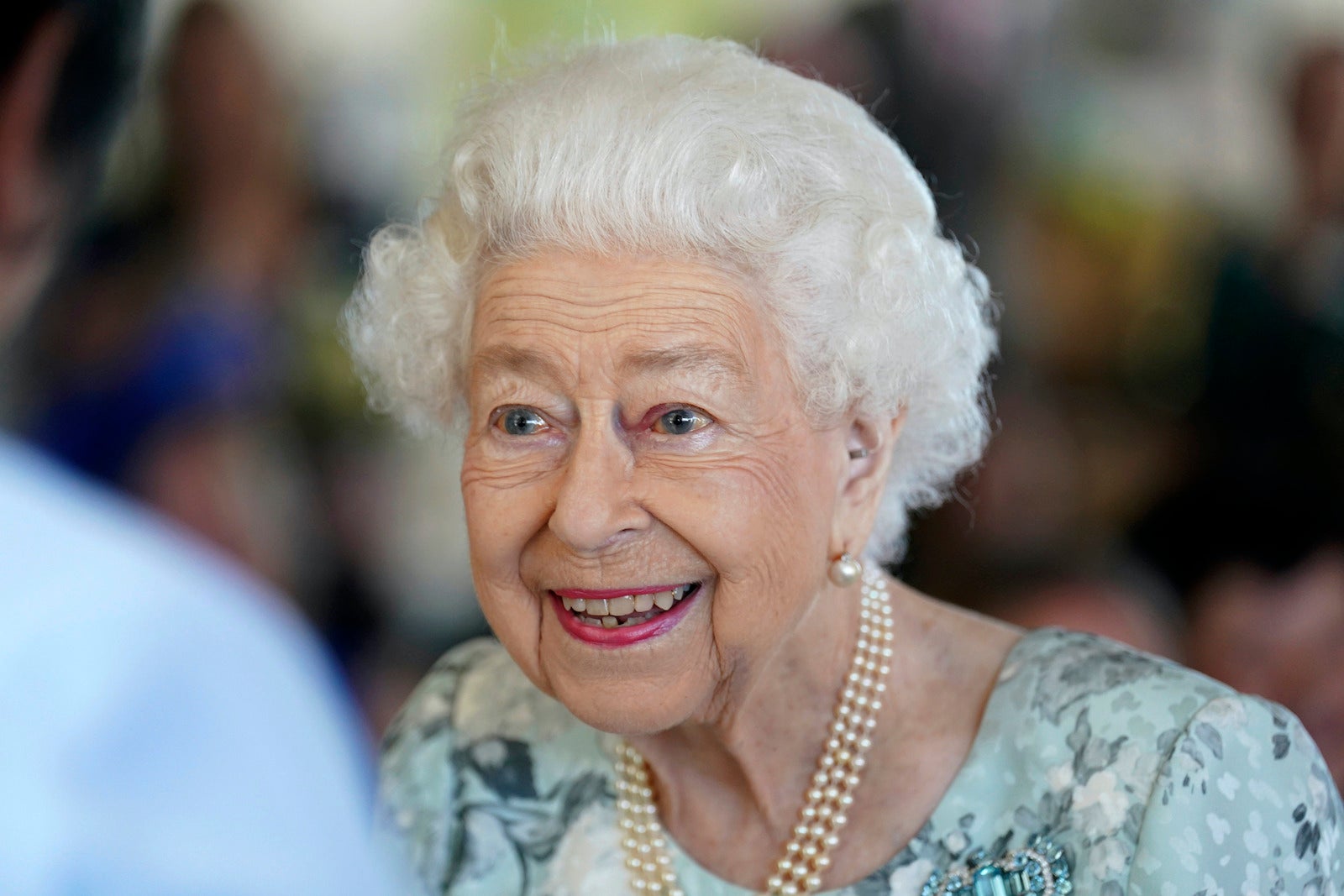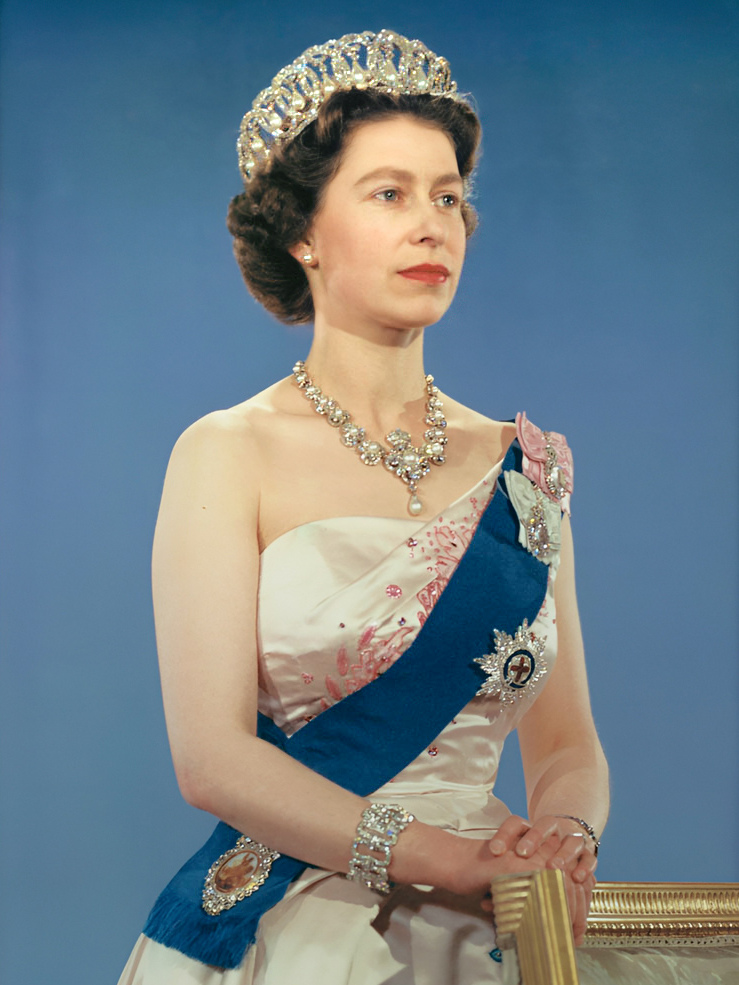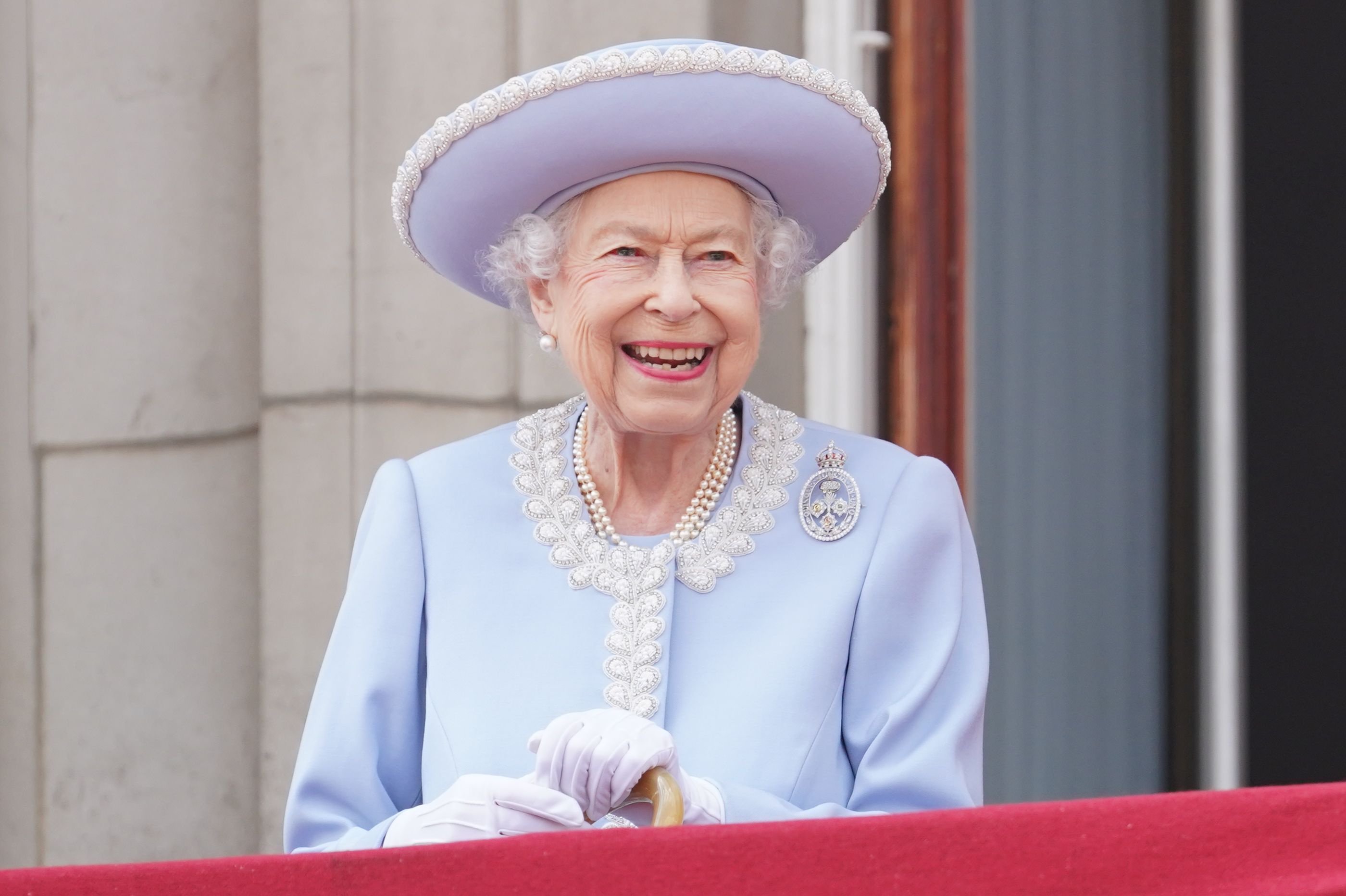Queen Elizabeth's Age When She Died - A Look Back
The passing of a very long-serving figure often makes people pause and reflect on the stretch of time they lived through, and that, you know, was certainly the case when Queen Elizabeth II left us. Her departure marked the end of an era for so many people around the globe, prompting conversations about her incredible length of days and the years she spent in a very public role. It’s a moment that, basically, brought a lot of thoughts about continuity and change to the forefront.
She was a person who, kind of, seemed to have been there forever for many of us, a constant presence through decades of huge shifts in the world. Her life spanned a truly remarkable period, witnessing, really, so many historical moments unfold, from post-war rebuilding to the arrival of the internet and beyond. It’s almost hard to picture a time without her as the head of state for the United Kingdom and other Commonwealth nations.
This naturally brings up questions about her personal timeline, especially how old Queen Elizabeth was when she passed away. People often wonder about the specific age, you know, thinking about what that meant for her time in her role and the legacy she leaves behind. We’ll take a look at those details and think a bit about the significance of such a long life lived in the public eye.
- Viviane Di%C3%A8ye
- English Nicknames For Lovers
- How Old Old Is Lady Gaga
- Victoria Gotti Younger Years
- News Gooya Com
Table of Contents
- A Life of Service: Queen Elizabeth's Story
- Personal Details and Bio Data
- How Old Was Queen Elizabeth When She Died?
- The Significance of Queen Elizabeth's Age When She Died
- What Did Her Long Life Mean for Her Role?
- A Constant Presence: How Her Longevity Shaped a Nation
- Why Did Her Passing Resonate So Deeply?
- The Human Connection to Queen Elizabeth's Age When She Died
A Life of Service: Queen Elizabeth's Story
Queen Elizabeth II, born Elizabeth Alexandra Mary, lived a life that, you know, really defined an era for many. Her early days were spent with the expectation of a somewhat different path, but circumstances shifted, placing her directly in line for the crown. She was quite young when she took on this immense responsibility, a moment that changed her personal path forever. Her whole adult existence, basically, was dedicated to her duties, a commitment that was visible to the world.
She saw many world leaders come and go, and she witnessed so many shifts in society, from the post-war years right up to the modern day. Her presence at the head of the British monarchy, you know, provided a sense of steadiness through all these changes. She was a figure who seemed to represent a link to the past while also, in a way, trying to keep up with the present. Her time on the throne was marked by a quiet strength and a dedication to her promises, which many people admired.
Her life story is, really, a long narrative of duty and public visibility. From her earliest days, she was part of a very public family, but her ascension to the throne amplified that visibility to a truly global scale. She carried out her duties with a quiet determination, always appearing in public with a sense of purpose. Her long period of service, you know, became a hallmark of her time as the head of state.
- Oj Simpson Trial Attorneys
- Kathleen Marie Mclaughlin
- Mecca Morgan White
- What Is Project X Based On
- Who Is Benny Blanco
She became queen at a time when the world was, kind of, still finding its footing after major global conflicts. Her reign saw the transformation of the British Empire into the Commonwealth of Nations, a shift that, basically, redefined many relationships. She was a constant through these evolutions, providing a sense of continuity that many found reassuring. Her life, in a way, mirrored the changing face of the nations she served.
The story of her life is, in fact, a story of adapting to a constantly shifting global stage while maintaining a core sense of tradition. She was someone who, you know, met countless people from all walks of life, from world leaders to everyday citizens. Her interactions, often quiet and dignified, spoke volumes about her approach to her role. It’s a record of service that, really, stands out for its sheer length and unwavering nature.
Personal Details and Bio Data
To give a clearer picture of her life, here are some key personal details for Queen Elizabeth II. These facts, you know, help to frame the timeline of her existence and her time as a public figure. It’s a way to see the specific dates that marked her life’s journey.
| Full Name | Elizabeth Alexandra Mary Windsor |
| Born | April 21, 1926 |
| Place of Birth | Mayfair, London, England |
| Passed Away | September 8, 2022 |
| Place of Passing | Balmoral Castle, Scotland |
| Age at Passing | 96 years old |
| Years as Monarch | 70 years and 214 days |
These details, you know, really underscore the remarkable length of her life and her period of leadership. She was, basically, a person who saw nearly a century of history unfold during her own lifetime. The numbers themselves tell a story of an incredibly long stretch of time spent in a very public role, a fact that, you know, makes her unique among many world figures.
Her birth date, in 1926, places her in a generation that experienced so much global change, from economic downturns to world conflicts, and then, you know, the rise of a truly connected world. Her passing in 2022, after such a long period of public service, naturally brought a sense of the end of an era for many people. It was a moment that, really, felt significant across different generations.
How Old Was Queen Elizabeth When She Died?
Many people wonder about the exact age of Queen Elizabeth II when she passed away, and it’s a very natural question to ask. Knowing her age helps to put her long period of service into perspective. She was, in fact, quite advanced in years, having lived through so much history herself. It’s a number that, you know, really speaks to her incredible longevity.
So, when Queen Elizabeth II passed away on September 8, 2022, she was 96 years old. This age, basically, makes her one of the longest-lived monarchs in history, and certainly the longest-reigning British monarch. It's a fact that, you know, really stands out when you consider the demands of her role and the public nature of her life. Her age at the time of her passing reflects a life lived to a very full extent.
Her 96 years saw her witness so many world events and changes in society. She was born in the 1920s, a time that feels, in a way, very different from our own. Her life then stretched through the Great Depression, World War II, the Cold War, and the digital revolution, to name just a few periods. This long span of time, you know, really emphasizes the depth of her personal experience and the history she lived through.
The number 96, you know, isn't just a figure; it represents a life full of experiences, responsibilities, and a consistent public presence. For many, she was the only monarch they had ever known, and her long life meant that she was a constant thread through their own changing lives. Her age, really, became a symbol of her enduring presence and her dedication to her duties, right up until the very end.
The Significance of Queen Elizabeth's Age When She Died
The fact that Queen Elizabeth was 96 years old when she passed away carries a lot of significance, you know, beyond just the number itself. Her great age meant that she had lived through an enormous amount of change, both in her own nation and across the globe. This longevity, in a way, made her a living connection to many past eras, something that very few people can claim. It's almost like she was a walking history book for many.
Her advanced years, basically, also meant that she had provided an extraordinary period of stability for her people. For over seven decades, she was the head of state, a consistent figure in a world that often felt, you know, quite unpredictable. This long period of service, directly linked to her long life, offered a sense of reassurance and continuity for generations. It really was a remarkable stretch of time.
The impact of Queen Elizabeth's age when she died also relates to the sheer volume of experience she accumulated. Think about all the world leaders she met, all the crises she witnessed, and all the social shifts she observed. Her long life gave her a unique perspective on the passage of time and the way things change, and yet, you know, some things stay the same. This depth of experience, basically, shaped her approach to her role.
For many, her age was a symbol of enduring strength and a quiet determination. She continued to carry out her duties, even in her later years, with a grace that many found inspiring. Her long life, in a way, became a very visible sign of her commitment to her promises. It was a powerful message of perseverance, something that, you know, resonated with people across different walks of life.
So, her age at the time of her passing was not just a simple fact; it was a reflection of a life lived with immense purpose and a deep sense of duty. It highlighted her role as a constant presence, a steady hand through so much change. The significance of Queen Elizabeth's age when she died is, really, about the legacy of a life dedicated to service, a life that spanned nearly a century of human history.
What Did Her Long Life Mean for Her Role?
Her long life, you know, had a truly profound impact on the way she carried out her duties as the head of state. Being on the throne for over 70 years meant she gained an unparalleled amount of experience. She saw so many political cycles, social movements, and global events unfold, which, basically, gave her a unique perspective on the world. It was a kind of wisdom that only time can bring.
This extended period of service meant she became a constant, a familiar face across multiple generations. For many people, she was the only monarch they had ever known, which, you know, created a deep sense of connection and continuity. Her long life allowed her to be a steadying presence through times of both calm and upheaval, something that was, really, quite comforting for a lot of people.
Her longevity also meant that she had to adapt her role over many decades. The world changed dramatically from the 1950s to the 2020s, and the monarchy had to change with it, in a way. Her long life gave her the chance to guide this institution through different periods, ensuring its relevance in a very modern world. It was, basically, a continuous process of evolution and adjustment.
The sheer duration of her reign, made possible by her long life, meant she became a symbol of national identity for many. She represented a link to the past, a sense of tradition, and a source of pride for her country. Her long presence, you know, helped to solidify this image, making her a truly iconic figure on the global stage. It’s a testament to the power of enduring presence.
In essence, her long life meant her role was not just about performing ceremonial duties, but about being a living embodiment of history and continuity. She was, basically, a bridge between different eras, a figure who had personally witnessed so much. This gave her role a weight and a depth that few others could ever achieve, a truly remarkable aspect of her long period of leadership.
A Constant Presence: How Her Longevity Shaped a Nation
The incredible length of Queen Elizabeth II's life, and her corresponding time on the throne, truly shaped the feeling of a nation and its people. For many, she was simply always there, a steady point in a world that, you know, often felt like it was spinning very fast. This constant presence offered a sense of security and familiarity that, basically, became a part of daily life for generations.
Her longevity meant that she presided over many significant moments in national life, from celebrations to times of sadness. She was the person who, you know, addressed the nation during major events, offering words of comfort or encouragement. This consistent public role, made possible by her long life, fostered a deep connection between her and the people she served. It was, really, a shared experience over decades.
Because she lived so long, she became a figure known across different age groups. Grandparents, parents, and children all grew up with her as the head of state. This created a unique kind of shared experience, a collective memory that, you know, transcended individual generations. Her long life, basically, made her a unifying figure in a way that few others could be.
Her sustained presence also meant that she became a symbol of continuity and tradition in a world that was, kind of, constantly changing. In times of rapid social and technological shifts, she remained a fixed point, representing a link to the past while also, you know, quietly adapting to the present. This long-standing stability, made possible by her age, was a comfort to many who felt the pace of modern life accelerating.
So, her long life wasn't just a personal fact; it was a public phenomenon that, really, helped to define the character of a nation for many years. Her constancy, a direct result of her longevity, shaped how people viewed their own history and their place in the world. She was, basically, a quiet anchor through so much change, a very enduring symbol for her people.
Why Did Her Passing Resonate So Deeply?
The news of Queen Elizabeth II's passing, you know, really touched a chord with so many people, not just in the United Kingdom but around the world. Her death, at such an advanced age, felt like the closing of a very long chapter. It wasn't just the loss of a head of state; it was, basically, the loss of a figure who had been a constant presence for almost a century.
- Freddy Dodges Health Updates
- Lady Gaga Birthdate
- Will Reeves Future Plans
- Lady Gaga Now Age
- Lady Gaga Age 2025

Queen Elizabeth II dies at age 96 - WHYY

Elizabeth II - Wikidata

Queen Elizabeth - Porsche Velez